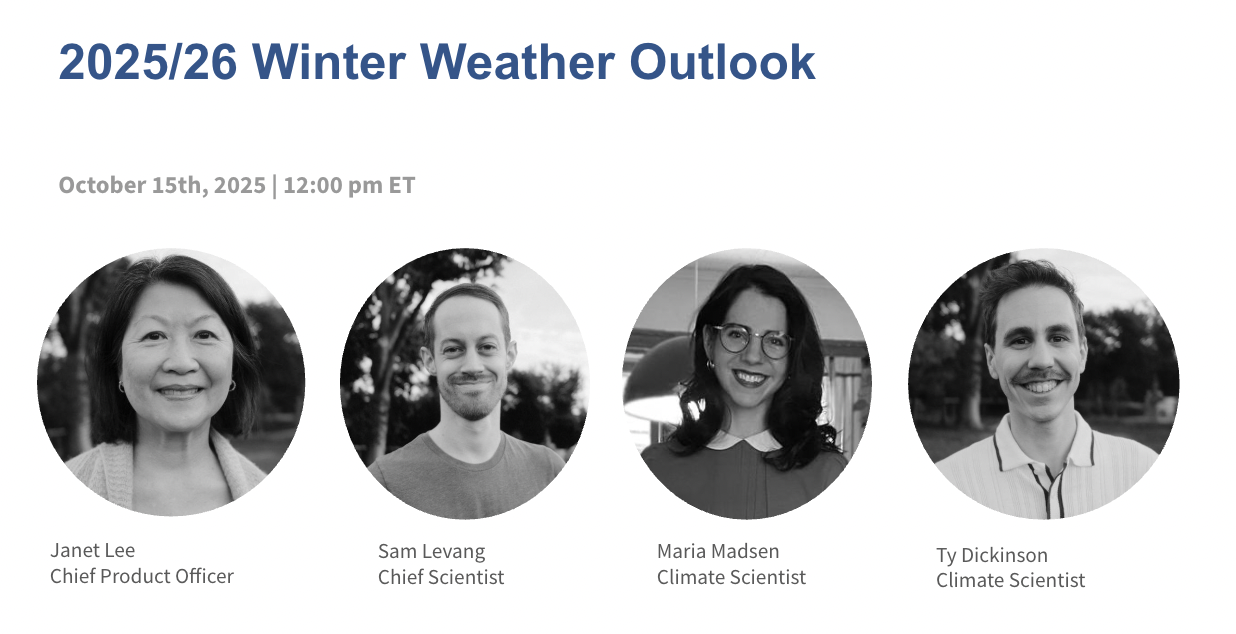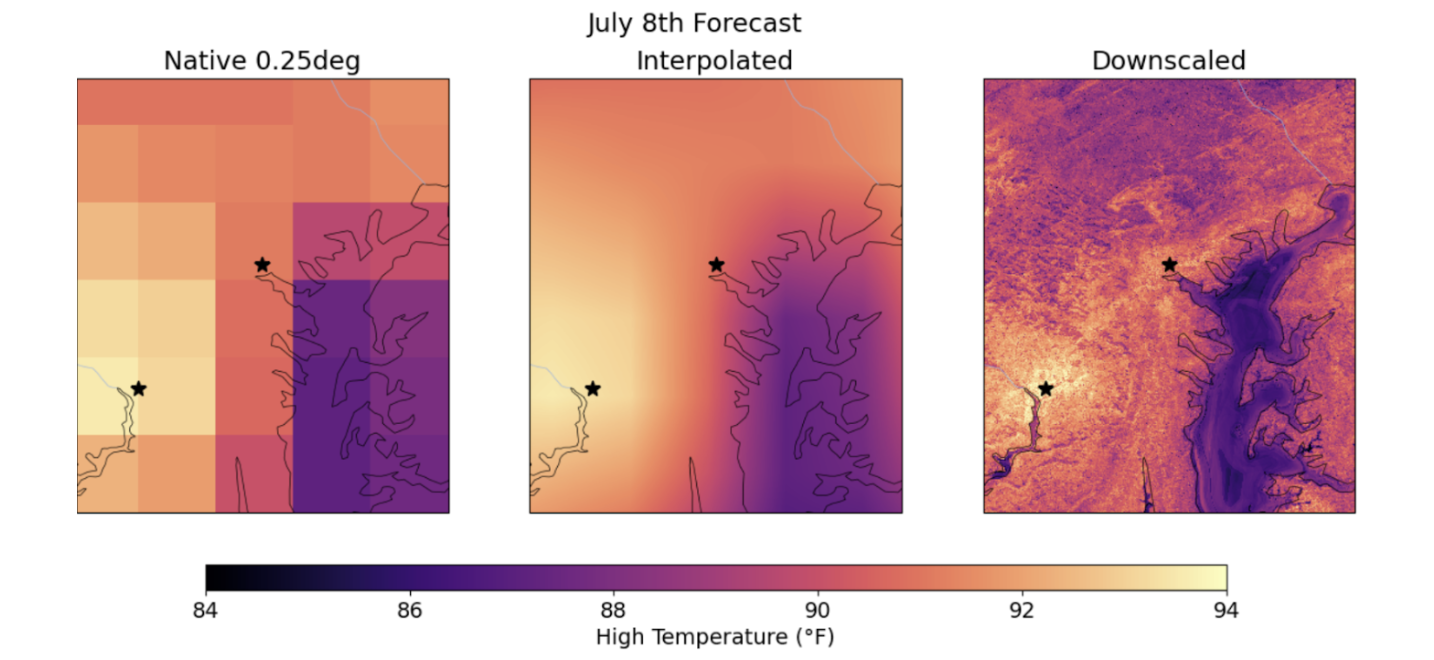
September 18, 2025
September 18, 2025
How Salient Localizes Weather Forecasts for Greater Precision
Physically-informed spatial downscaling

Unlocking the Potential of Data-Driven Weather Modeling
Data-driven weather models powered by AI and machine learning are transforming forecasting. Compared to traditional methods, they deliver:
- Faster forecast generation
- More ensemble members
- Greater computational efficiency
But as with any model, the training data matters. These systems are trained on ERA5 reanalysis data—a widely used dataset, but one that comes with limitations.
The Challenge: Imperfections in ERA5
ERA5 is often treated as “ground truth,” but it isn’t perfect. Some of the key issues include:
- Coarse resolution: Each ERA5 grid cell covers ~30 km, meaning forecasts represent an average across that area, not specific points within it.
- Variable biases: Data quality depends heavily on the availability of reliable observations in a given region.
- Local mismatches: When local environments differ from grid cell averages, big discrepancies can appear. Examples include:
- Areas with sharp elevation changes
- Coastal zones
- Urban locations influenced by the heat island effect
This is relevant when you need the most accurate forecast for a specific point like a renewable asset or a city. Some financial contracts like CME’s Heating/Cooling Degree Day settle based on station observation data.
The Salient Approach
Salient’s GEM (Generative Ensemble Model) is built on ERA5, delivering a skillful forecast with 200 ensemble members at 25 km resolution. To go further, we developed a spatial debiasing model that corrects ERA5’s inherent biases by downscaling forecasts to the sub-grid level for any latitude/longitude location.

The Solution: Debiasing Model
This generalized model ensures more accurate, localized forecasts - even in data-sparse regions.
- Learns relationships between ERA5 data and local environmental factors
- Calculates a bias correction factor without needing a nearby station
September 18, 2025
September 18, 2025
How Salient Localizes Weather Forecasts for Greater Precision
Physically-informed spatial downscaling

Unlocking the Potential of Data-Driven Weather Modeling
Data-driven weather models powered by AI and machine learning are transforming forecasting. Compared to traditional methods, they deliver:
- Faster forecast generation
- More ensemble members
- Greater computational efficiency
But as with any model, the training data matters. These systems are trained on ERA5 reanalysis data—a widely used dataset, but one that comes with limitations.
The Challenge: Imperfections in ERA5
ERA5 is often treated as “ground truth,” but it isn’t perfect. Some of the key issues include:
- Coarse resolution: Each ERA5 grid cell covers ~30 km, meaning forecasts represent an average across that area, not specific points within it.
- Variable biases: Data quality depends heavily on the availability of reliable observations in a given region.
- Local mismatches: When local environments differ from grid cell averages, big discrepancies can appear. Examples include:
- Areas with sharp elevation changes
- Coastal zones
- Urban locations influenced by the heat island effect
This is relevant when you need the most accurate forecast for a specific point like a renewable asset or a city. Some financial contracts like CME’s Heating/Cooling Degree Day settle based on station observation data.
The Salient Approach
Salient’s GEM (Generative Ensemble Model) is built on ERA5, delivering a skillful forecast with 200 ensemble members at 25 km resolution. To go further, we developed a spatial debiasing model that corrects ERA5’s inherent biases by downscaling forecasts to the sub-grid level for any latitude/longitude location.

The Solution: Debiasing Model
This generalized model ensures more accurate, localized forecasts - even in data-sparse regions.
- Learns relationships between ERA5 data and local environmental factors
- Calculates a bias correction factor without needing a nearby station
About Salient
Salient combines ocean and land-surface data with machine learning and climate expertise to deliver accurate and reliable subseasonal-to-seasonal weather forecasts and industry insights—two to 52 weeks in advance. Bringing together leading experts in physical oceanography, climatology and the global water cycle, machine learning, and AI, Salient helps enterprise clients improve resiliency, increase preparedness, and make better decisions in the face of a rapidly changing climate. Learn more at www.salientpredictions.com and follow on LinkedIn and X.



